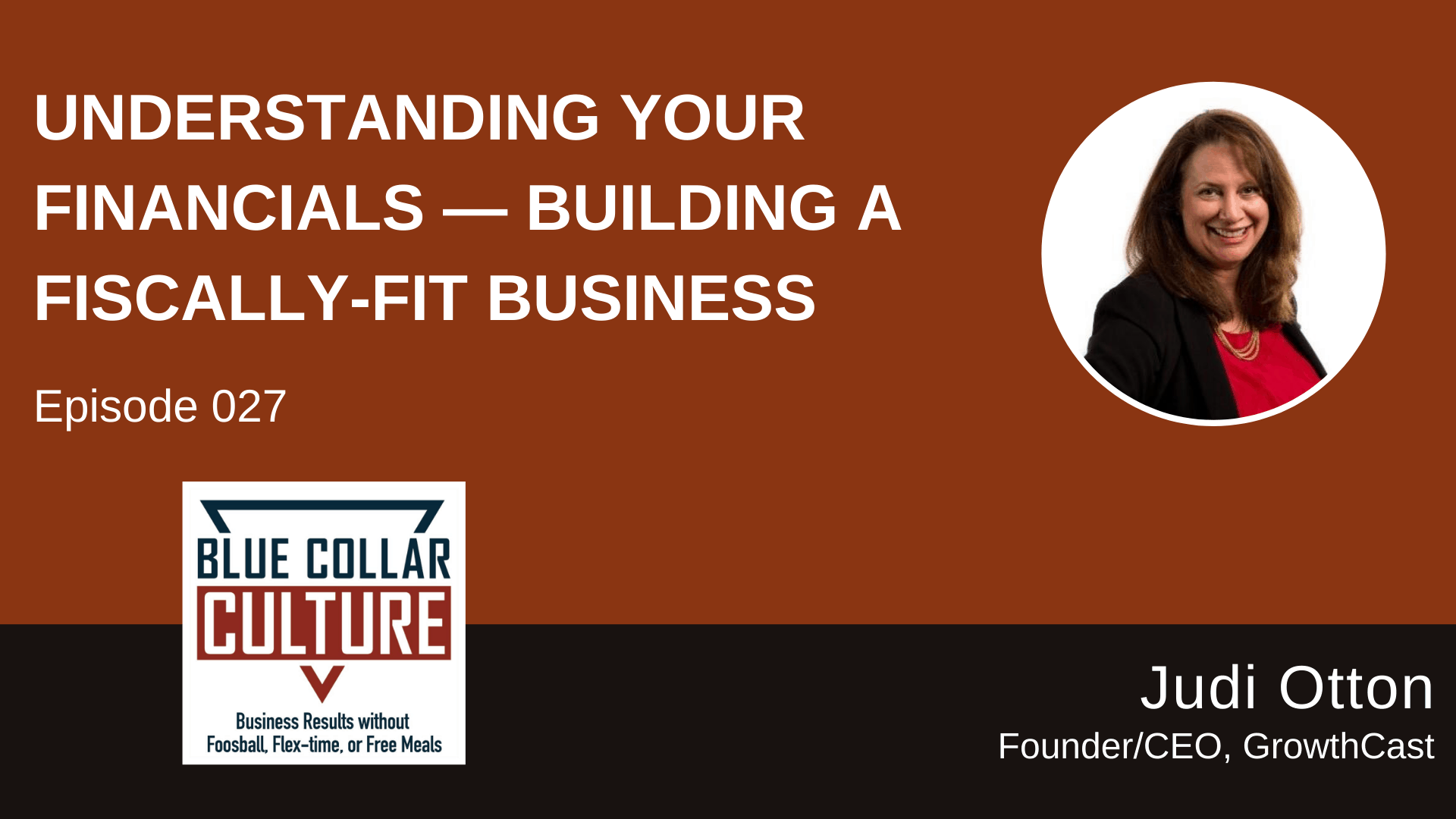On this week’s episode of the Blue Collar Culture Podcast, we speak with special guest Judi Otton. Judi is the Founder and CEO of GrowthCast, a company dedicated to helping small business owners manage their cash flow, maximize their profits, and ensure that the financial aspects of their business are all in order. She is also a “CFO for hire” dedicated to teaching business owners how to build fiscally-fit businesses.
“Many business owners will only look at one or a couple of things. They may only look at the balance in their bank account, or maybe they’ll look at a P&L periodically, but there are a few things that should be worth looking at. First of all, their P&L, you want to know if you’re running profitably. But, I also want them to be able to drill down into that and understand what kinds of customers, or what kinds of jobs, or what industry is really giving them the most profit, not the most revenue, which is the most money in the door, the most profit, which is how much money you keep at the end of the day,” says Judi.
We chat about common money myths faced by business owners, as well as:
- What to look for in on a balance sheet
- Why being debt-averse could prevent your business from growing
- Cash flow statements and forecasts
- And more
Listen now…

